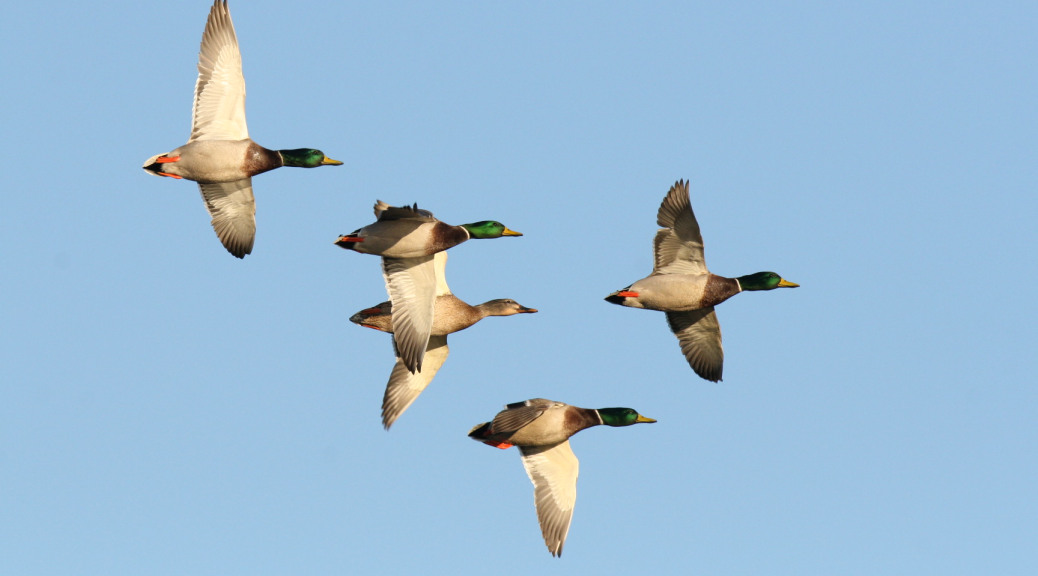
Ducks in Flight
Credit: CDFW
July 27, 2024 - The California Department of Fish and Wildlife (CDFW) has completed its 2024 waterfowl breeding population survey. The resulting data indicate the overall number of breeding ducks has decreased by 25 percent, while mallards decreased 12 percent, the most abundant duck in the survey.
"Despite another good water year, the lack of adequate nesting habitat, particularly in the Central Valley, continues to restrict waterfowl population growth in California," said CDFW Waterfowl Program Biologist Melanie Weaver.
The complete 2024 California Waterfowl Breeding Population Survey Report is available at the CDFW website.
The total numbers of ducks (all species combined) decreased from 495,438 in 2023 to 373,864 this year. This estimate is 30 percent below the long-term average.
The estimated breeding population of mallards decreased from 202,108 in 2023 to 177,828 this year, while also below their long-term average. The long-term declines are largely attributed to the loss of nesting habitat for ducks. Additionally, the impact of recent drought conditions likely have exacerbated these declines.
CDFW biologists and warden-pilots have conducted this survey annually using fixed-wing aircraft since 1948. The population estimates are for those areas where the vast majority of waterfowl nesting occurs in California, including wetland and agricultural areas in northeastern California, throughout the Central Valley, the Suisun Marsh and some coastal valleys.
The majority of California’s wintering duck population originates from breeding areas surveyed by U.S. Fish and Wildlife Service (USFWS) in Alaska and Canada, and these results should be available by August. CDFW survey information, along with similar data from other Pacific Flyway states, is used by the USFWS and the Pacific Flyway Council when setting hunting regulations for the Pacific Flyway states, including California.
Source: CDFW
Related: California Department of Fish and Wildlife Announces Breeding Ducks Increase by 30 Percent Year-Over-Year in 2023 Waterfowl Breeding Population Survey








